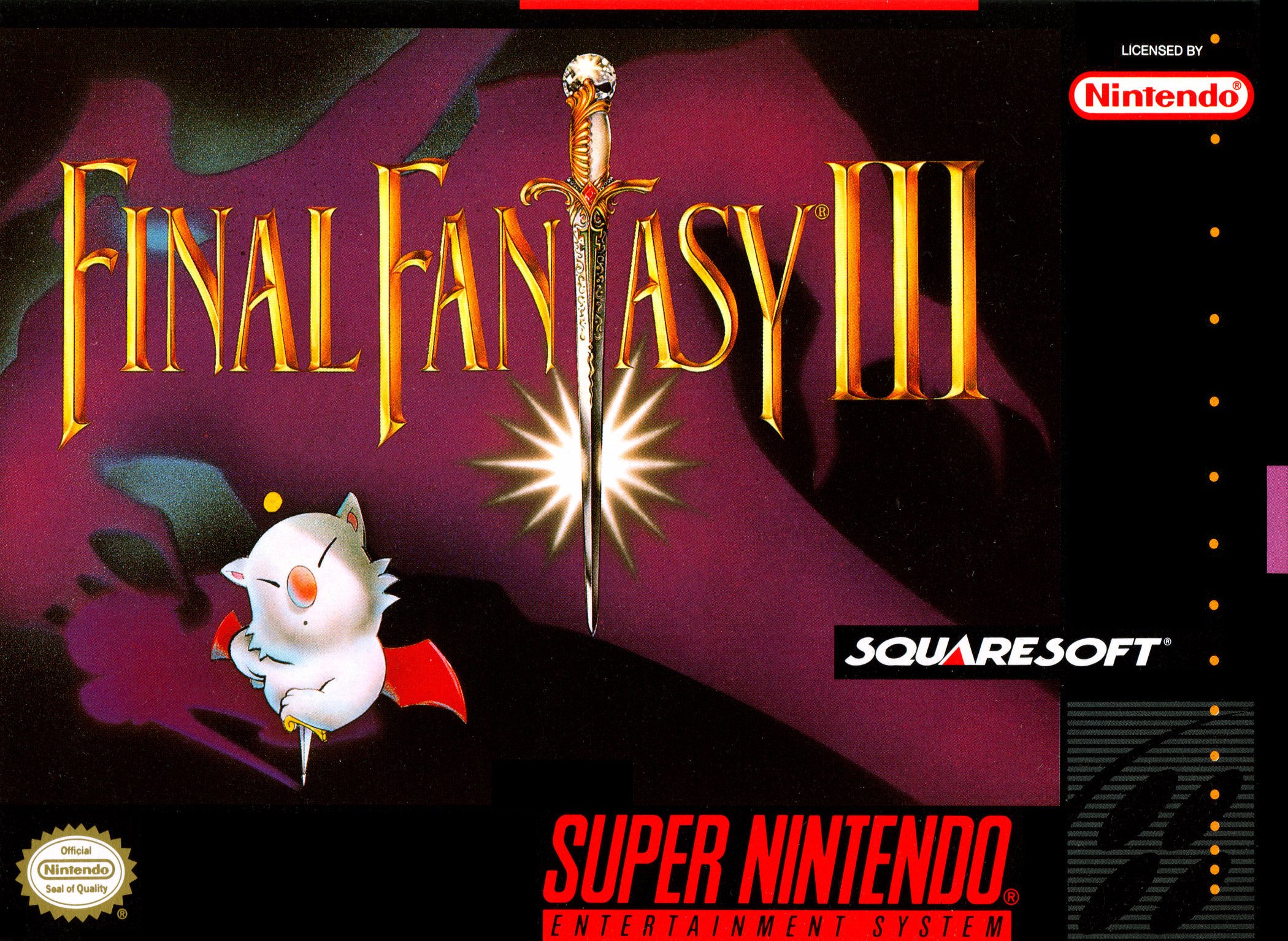
FINAL FANTASY III (VI)
Final Fantasy III, released for the SNES in 1994 by Square (known in Japan as Final Fantasy VI), is widely regarded as one of the greatest RPGs of all time. Its innovative storytelling, richly detailed visuals, and emotionally resonant soundtrack pushed the boundaries of what was possible in 16-bit gaming, setting a new standard for the genre.
At the heart of Final Fantasy III is its powerful narrative, which weaves a tale of rebellion, loss, and redemption. Set in a world where magic has been suppressed and replaced by industrialization, players are introduced to a diverse ensemble cast of 14 playable characters, each with their own backstories, motivations, and growth arcs. From Terra, a young woman grappling with her mysterious powers, to Locke, a treasure hunter seeking to right his past, every character is thoughtfully crafted, and their relationships deepen as the story unfolds.
The game’s visuals showcase the SNES’s capabilities, featuring intricately designed sprites that convey emotion and personality. Characters express joy, despair, and determination through nuanced animations, bringing their stories to life. The enemies and bosses are equally impressive, with detailed designs ranging from mechanical monstrosities to otherworldly creatures. Kefka, the game’s antagonist, is one of the most memorable villains in gaming history, his chaotic descent into madness reflected in his increasingly grotesque and elaborate visual transformations.
The environments in Final Fantasy III are breathtakingly diverse, ranging from bustling cities and vast deserts to haunted forests and floating islands. Each locale is crafted with vibrant colors, layered backgrounds, and intricate details that create a sense of depth and immersion. The transition from the lush World of Balance to the desolate World of Ruin is a visual and thematic masterstroke, reinforcing the narrative’s emotional stakes. Parallax scrolling and subtle effects like shimmering waters and flickering flames enhance the atmosphere and elevate the overall presentation.
Combat in Final Fantasy III utilizes the refined Active Time Battle (ATB) system, blending real-time urgency with turn-based strategy. The addition of unique character abilities, such as Sabin’s martial arts techniques and Edgar’s tools, adds variety and depth to battles. Spellcasting and special moves are rendered with vibrant visual effects, from cascading fireballs to dramatic healing light, showcasing the SNES’s ability to handle intricate animations.
The game’s storytelling is enriched by its use of visual and environmental cues. Moments like the opera scene—where sprites sing and perform in a dramatic sequence—highlight the developers’ commitment to blending gameplay with artistic expression. Subtle details, such as crumbling ruins or an abandoned airship, convey the passage of time and the characters’ struggles without relying on dialogue.
The audio design, led by composer Nobuo Uematsu, is a masterpiece. The soundtrack features unforgettable tracks like “Terra’s Theme” and “Dancing Mad,” which perfectly capture the game’s emotional highs and lows. The music transitions seamlessly between moments of tension, triumph, and introspection, adding depth to the narrative and visuals. Crisp sound effects, from the clang of weapons to the hum of magical energy, further enhance the experience.
In conclusion, Final Fantasy III on the SNES is a landmark achievement in gaming. Its detailed sprite work, richly diverse environments, emotionally charged narrative, and unforgettable music elevate it beyond an RPG to a piece of interactive art. Celebrated for its storytelling and artistic innovation, Final Fantasy III remains a timeless classic that continues to inspire players and developers alike.

